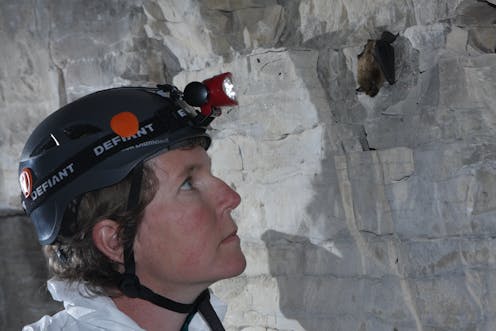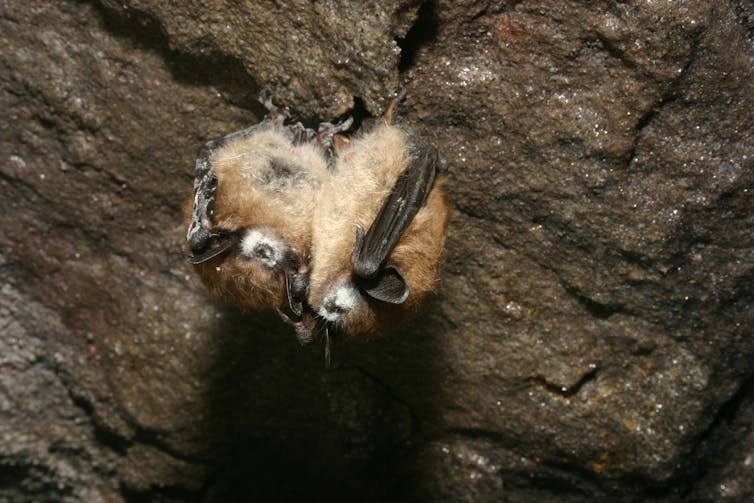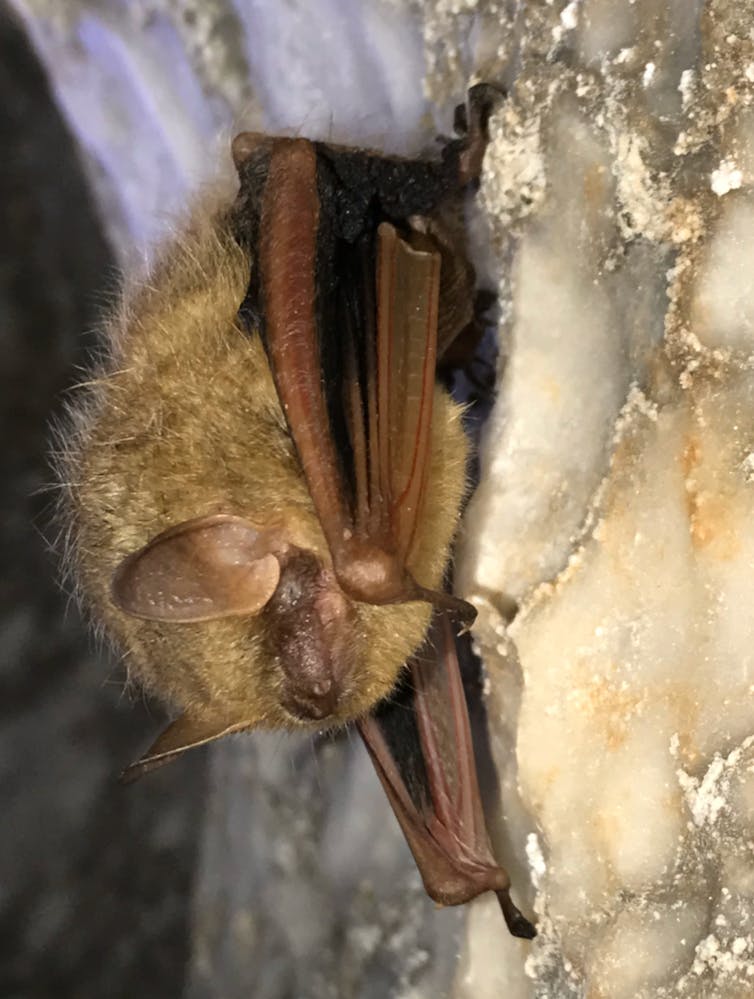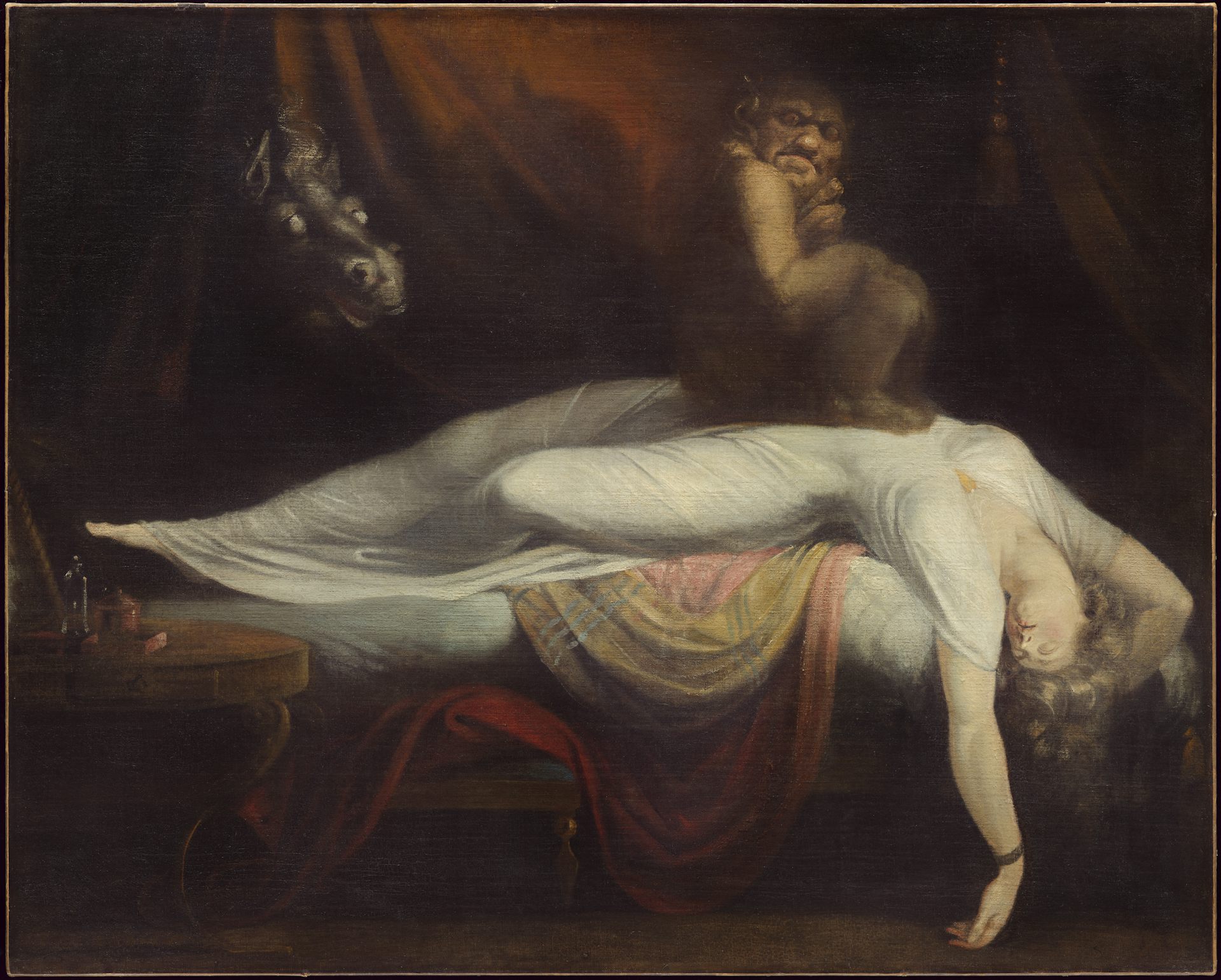What is white-nose syndrome in bats?
Researchers are puzzled by a fungus that is killing millions of bats.


Curious Kids is a series for children of all ages. If you have a question you’d like an expert to answer, send it to curiouskidsus@theconversation.com.
What is white-nose syndrome in bats? – Minti F., age 13, Boston, Massachusetts
Scientists count bats in the winter to make sure their populations are doing okay. They look in caves and abandoned mines where bats hibernate when it is too cold to hunt for insects to eat.
About 10 years ago, during their annual winter bat counts, scientists noticed that bats in caves in New York state were dying. The bats that were still alive had a white fuzzy growth on their muzzles and wings. Scientists didn’t know what it was and named it white-nose syndrome.

Now we know a lot more about white-nose syndrome, a disease that kills bats when they hibernate. I am a scientist who studies bats to learn more about how to protect them.
A fungus that infects hibernating bats
The white-nose syndrome disease is caused by a fungus that grows on bats’ skin when they are trying to survive winter by hibernating in cold, dark subterranean habitats like mines and caves. Bats are mammals like you. But unlike people, they have a special ability to “go cold” to save energy when there isn’t anything to eat. This is called torpor.

The fungus that causes this disease can live on the walls of caves and mines. It grows best in cold temperatures and infects bats when their immune system, which fights infection, isn’t as active.
Bats have skin on their wings, muzzles and a membrane that connects between their tail and hind legs. The fungus eats into those skin tissues, causing lesions. The infection causes the bats to wake up from their energy-saving torpor. Bats can’t survive for long in the middle of winter without food, and they starve to death.
Bats started dying by the thousands in the winter of 2006-2007, sounding the alarm that something was seriously wrong. Some bat species are more vulnerable to the disease, like the northern long-eared bat, the little brown bat and the tri-colored bat.
We estimate that millions of bats across North America have died as the fungus has spread. Bats need our help. In the past 10 years, many wildlife biologists have worked hard to help bats survive. There are no easy solutions, but a lot of scientific research is underway to discover how we can protect bats.
Hello, curious kids! Do you have a question you’d like an expert to answer? Ask an adult to send your question to curiouskidsus@theconversation.com. Please tell us your name, age and the city where you live.
And since curiosity has no age limit – adults, let us know what you’re wondering, too. We won’t be able to answer every question, but we will do our best.
Winifred Frick works for Bat Conservation International, a non-profit organization dedicated to protecting bat populations around the world.
Read These Next
Empathy and reasoning aren’t rivals – new research shows they work together to drive people to help
Those driven by both heart and mind help the most people, even far beyond their own circle.
Flat Earth, spirits and conspiracy theories – experience can shape even extraordinary beliefs
Conspiracy thinking, supernatural beliefs and pseudoscience can seem impervious to evidence. An anthropologist…
Stalin’s postwar terror targeted Soviet Jews – in the name of ‘anti-cosmopolitanism’
Thirteen Jewish leaders and artists were killed on the ‘Night of the Murdered Poets,’ one of the…






